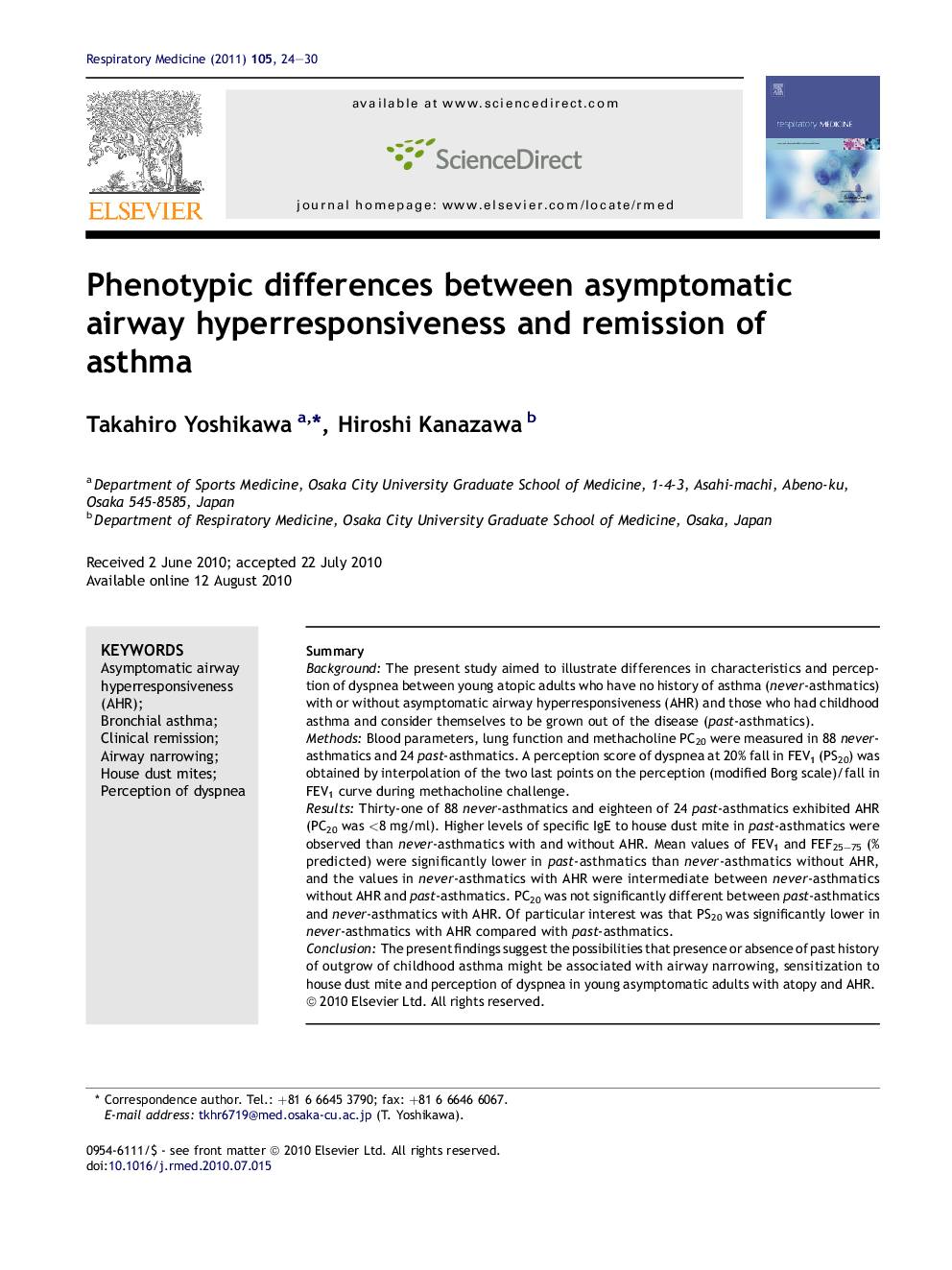| Article ID | Journal | Published Year | Pages | File Type |
|---|---|---|---|---|
| 4210429 | Respiratory Medicine | 2011 | 7 Pages |
SummaryBackgroundThe present study aimed to illustrate differences in characteristics and perception of dyspnea between young atopic adults who have no history of asthma (never-asthmatics) with or without asymptomatic airway hyperresponsiveness (AHR) and those who had childhood asthma and consider themselves to be grown out of the disease (past-asthmatics).MethodsBlood parameters, lung function and methacholine PC20 were measured in 88 never-asthmatics and 24 past-asthmatics. A perception score of dyspnea at 20% fall in FEV1 (PS20) was obtained by interpolation of the two last points on the perception (modified Borg scale)/fall in FEV1 curve during methacholine challenge.ResultsThirty-one of 88 never-asthmatics and eighteen of 24 past-asthmatics exhibited AHR (PC20 was <8 mg/ml). Higher levels of specific IgE to house dust mite in past-asthmatics were observed than never-asthmatics with and without AHR. Mean values of FEV1 and FEF25–75 (%predicted) were significantly lower in past-asthmatics than never-asthmatics without AHR, and the values in never-asthmatics with AHR were intermediate between never-asthmatics without AHR and past-asthmatics. PC20 was not significantly different between past-asthmatics and never-asthmatics with AHR. Of particular interest was that PS20 was significantly lower in never-asthmatics with AHR compared with past-asthmatics.ConclusionThe present findings suggest the possibilities that presence or absence of past history of outgrow of childhood asthma might be associated with airway narrowing, sensitization to house dust mite and perception of dyspnea in young asymptomatic adults with atopy and AHR.
